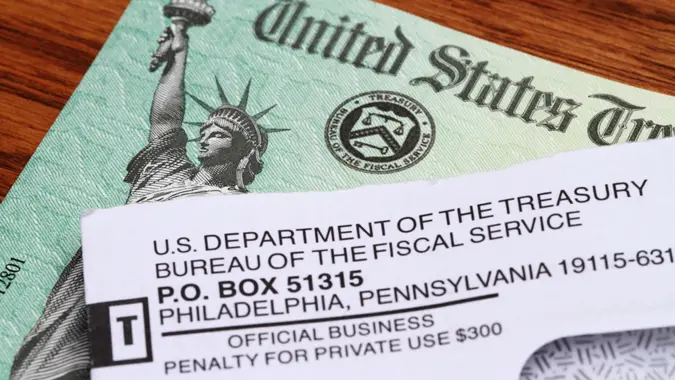3 Steps Tori Dunlap Took To Set Herself Up for a $30 Million Retirement

Commitment to Our Readers
GOBankingRates' editorial team is committed to bringing you unbiased reviews and information. We use data-driven methodologies to evaluate financial products and services - our reviews and ratings are not influenced by advertisers. You can read more about our editorial guidelines and our products and services review methodology.

20 Years
Helping You Live Richer

Reviewed
by Experts

Trusted by
Millions of Readers
Sometimes, it feels like being born with a silver spoon in your mouth is the only way to ensure your golden years shine brightly. It can feel overwhelming to plan for retirement when you’re still trying to get your financial bearings. However, there are things you can do to help yourself get in financial shape for retirement — and they’re not as tricky as you might imagine.
Tori Dunlap, the entrepreneur, author and financial coach behind Her First $100K, rose to fame for becoming a millionaire before she hit age 30. Though Dunlap came from a middle-class family where she learned how to be savvy about money, she’s committed her platform to helping people who are typically disadvantaged learn how to earn and save more.
So much more, in fact, that they could retire as millionaires, just as Dunlap is prepared to do thanks to the steps she took in her 20s to grow her wealth.
Step 1. Know That Investing Isn’t Just for Rich People
Dunlap said the standard misconception around investing is that it’s just like those scenes in “The Wolf of Wall Street” (you know the ones) where brokers are screaming on the phones. It’s nothing quite that intense — it’s a matter of letting your money work for you over time.
While Dunlap was eventually able to drop $100,000 into investments in her 20s, starting small — even with just $100 — can set you on the path to growing your wealth. She’s also quick to point out that while many “finance bros” will try to persuade you that learning how to invest is hard (which is exactly why they charge you wild sums to tell you how to do it), you can learn how to do it yourself.
There are plenty of resources available to help you learn, like Dunlap’s Financial Feminist podcast, as well as books you can easily borrow from the library for free.
Step 2. Embrace Compound Interest — As Early as Possible
Part of making your money work for you, especially in the stock market, is earning compound interest. Is the term new to you? In a nutshell, it’s the interest you earn on interest by reinvesting your returns into your account.
Let Investor.gov break it down for you: “If you have $100 and it earns 5% interest each year, you’ll have $105 at the end of the first year. At the end of the second year, you’ll have $110.25. Not only did you earn $5 on the initial $100 deposit, you also earned $0.25 on the $5 in interest.”
Okay, $0.25 isn’t a lot, but it’s something. And applying the same principles to larger sums can yield results that make a significant difference in your retirement. The earlier you start, the better the results. For Dunlap, it’s one of the smartest routes to take on your wealth-building journey. She recommends taking a portion of your money and reinvesting it to allow compound interest to grow.
“Compound interest works regardless of age and regardless of the amount of money. Compound interest works whether you’re 18 or 88 or somewhere in between. And compound interest works whether you have $100 or $100,000,” Dunlap said.
Step 3. Be Patient — You’re in This for the Long Haul
Let’s say you invest wisely. Like, really wisely. Between what you’ve earned at your job and those sweet little honeypots of investments, you’re thinking, Hey, maybe I can retire sooner than I’d expect. How about right now?
Not so fast. Dunlap reminds listeners that the lives they’re living in the here and now may be very different from the ones they’ll lead as they approach retirement. Anything from additions to the family to sudden illnesses could derail your plans. You should also be prepared for challenges like inflation and rising healthcare costs.
Being prepared means saving as much as you can and letting your investments grow as much as possible over time.
“Investing is not about right now. It is about over the course of years, if not decades,” Dunlap said.
Final Take To GO: Aim Big When Retirement Planning
Despite what many believe, you don’t have to be born rich to retire with millions. You also don’t have to join the pack of wolves on Wall Street. Learning how to invest, understanding compound interest and being patient can help you sail into the sunset of retirement feeling confident and comfortable.
 Written by
Written by  Edited by
Edited by 

























